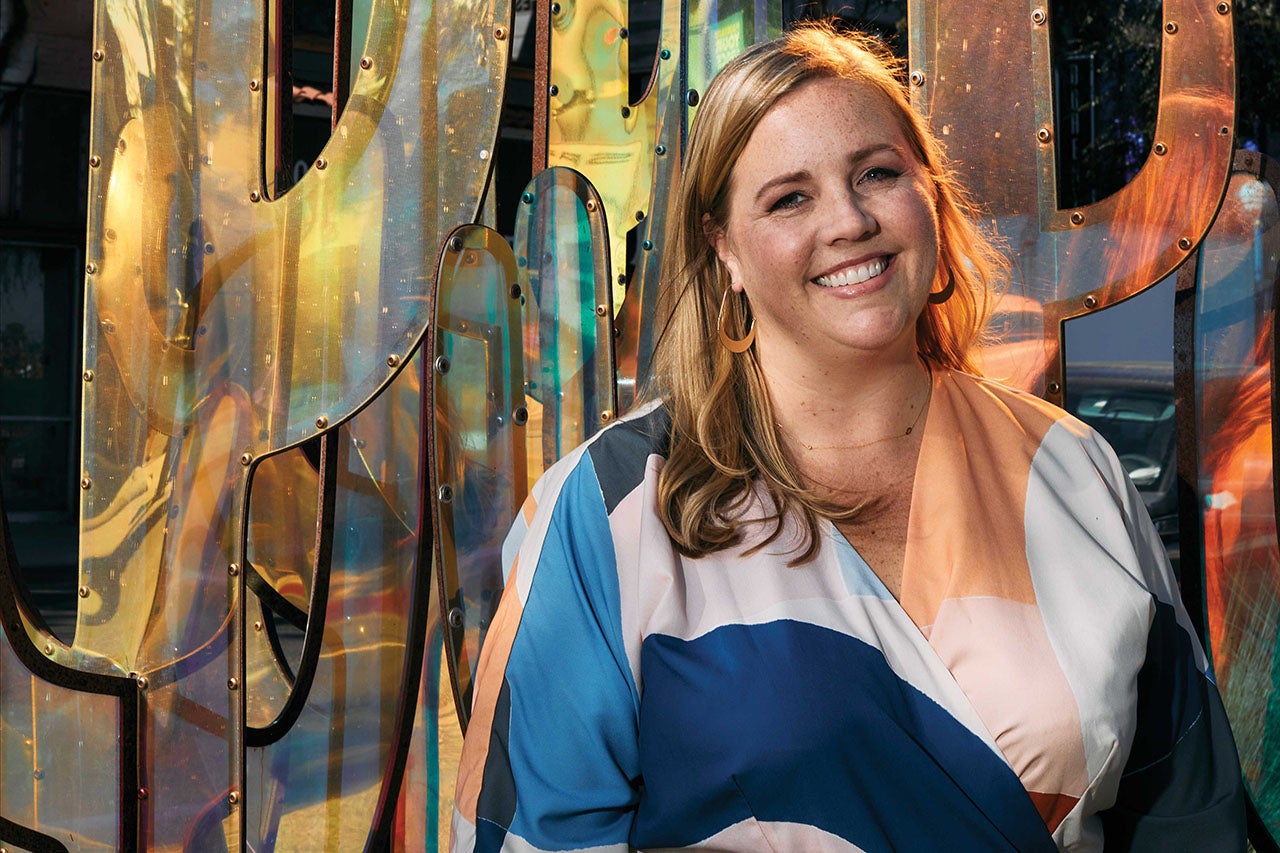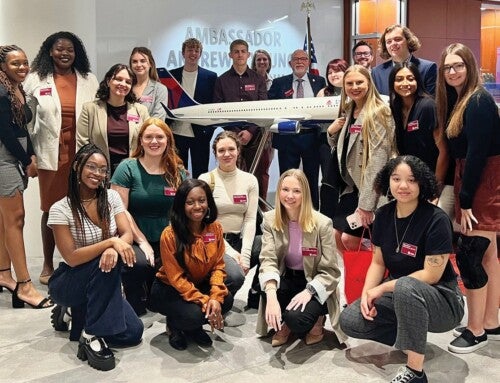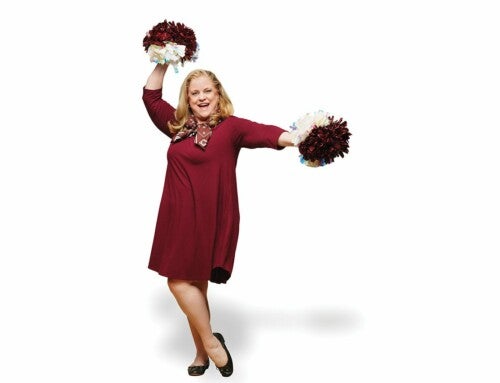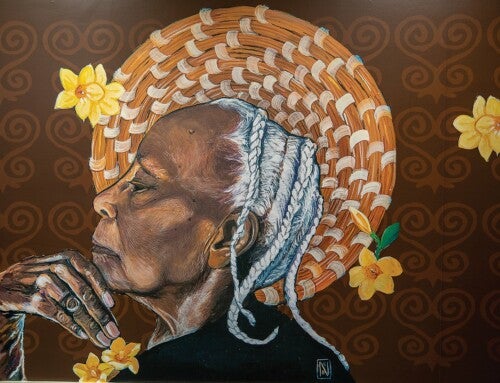Rebecca Ansert Ehemann ’01 is seated at a front booth inside the original Barney’s Beanery, the legendary West Hollywood, Calif., hangout for celebrities and artists since the late 1920s. “Funkytown,” the 1979 hit by Lipps Inc., is playing on the sound system, appropriately, since West Hollywood is as funky as it gets, and it’s Ehemann’s job to help keep it that way. As the city’s acting arts manager, she’s responsible for outdoor displays like “The Diver,” a neon sign of a diving girl in a red cap and red one-piece suit, right across the street in the median of Santa Monica Boulevard.
“Residents love her,” she says. “As soon as one of her neon bulbs goes out, I get a phone call.”
“The Diver” is just one of 70 permanent public art pieces that – in addition to the 30-plus murals and rotating temporary sculptures – accessorize this town. “The projects that really excite me are the ones that are pushing those boundaries of the notion of art and how we look at and utilize space,” says Ehemann. “It’s successful in my mind if it sparks a conversation, good or bad. Good public art humanizes us and softens our urban fabric.”
She likes artists who really think outside the box, even when they’re in a box. Case in point: The city celebrated the Sunset Strip’s contribution to music history by commissioning a musician to live inside a cube on the Strip for 10 days and compose a piece on a piano. (Thankfully, Ehemann made arrangements for the use of a shower and bathroom across the street.)
“It was magical,” she recalls. “Residents were excited. In this city in particular, the weirder the better. We’ve had several artworks like that, which is what attracted me to the city to begin with – working with these different challenges. It wasn’t just, how do you structurally engineer this piece so the public can interact with it safely and it won’t fall over on them?”
Ehemann, the mother of two young children, has been working for West Hollywood full time since 2015 and served as a consultant for five years prior to that. After graduating from CofC with a studio arts degree and a concentration in arts management, she started her career working with renown watercolorist Mary Whyte at Coleman Fine Art Gallery in Charleston. But she felt confined in the gallery space and wanted to work in the outdoor realm, helping artists realize big visions in a big city. This led her to pursue a master’s in public art studies at the University of Southern California – and to take a summer position with the Australian company, Urban Art Projects, where she got her first big assignment: helping a new university in Saudi Arabia plan its $25 million public art program on campus. Upon earning her master’s degree in 2008, Ehmann took a job with the Los Angeles County Arts Commission, managing 20 projects at a time for community centers, parks and libraries.
“My arts administration courses at CofC really opened up my eyes to accepting and acknowledging that I wasn’t going to be the one percent group of people who is going to make it as a full-time artist getting paid to create work, but it showed me a path and that there’s the business side of art that I realized I had good instincts for,” she says. “I could be a producer of art.”
Working with Mark Sloan, director and curator of the Halsey Institute of Contemporary Art, was also influential. “She was an outstanding student with great curiosity and a palpable commitment to the arts,” he says. “She was a veritable sponge around the Halsey and wanted to know everything there was to know.”
And so, when the pandemic upended public art, Ehemann turned to what she knows best, launching #ArtfulDistancing in October to create 14 temporary artworks, experiences and performances with the goal of helping the community reconnect, recover and realign to the new normal of their separated existence.
“October was nuts,” she says. “But that’s what I love about my job: No day is the same.”




